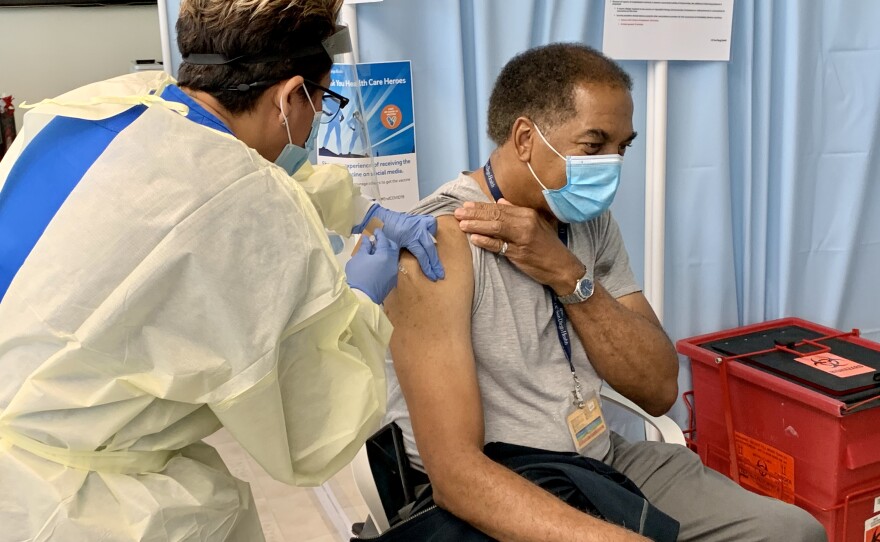UC San Diego Health says there has been a rise in COVID cases among its vaccinated workforce, and sent a letter to the editor of the New England Journal of Medicine this week about their findings.
Dr. Christopher Longhurst is the associate chief medical officer for UC San Diego Health and co-author of that letter.
“The message from this article is that the efficacy or the effectiveness against infection is waning. The effectiveness against hospitalization and death is not and so that’s why we want people to continue getting vaccinated,” Longhurst said.
RELATED: Surgeon General Praises County Board Chair For Health Misinformation Policy
He said nearly every case was community acquired, and about a third of the patients had gotten the virus from a child.
Longhurst cited three factors that have contributed to the COVID resurgence. The first being the state’s opening back in June and the lifting of the mask mandate.
He said another factor is the Delta variant, which is more transmissible and more contagious than the Alpha variant.
“Over the last four weeks, 97% of the cases that we’ve found have been Delta variant,” Longhurst said.
Lastly, he said evidence suggests waning immunity from the vaccine.
“I want to be really clear again, this is not waning immunity against severe disease, it’s waning of immunity against the ability to prevent infection and transmission,” Longhurst emphasized.
RELATED: Moderna Has Asked The FDA To Authorize A Booster Of Its COVID-19 Vaccine
UCSD asked the state for the okay to give boosters to its frontline health workers. The state deferred that to the CDC, which has said boosters will start being administered on September 20th, but have not issued any guidelines.
“Based on our data as well as other recently published data, we think that our healthcare workers should be boosted with a third shot,” Longhurst said. “We think that this is going to help to prevent further infection and transmission.”
The COVID surge isn’t the only thing doctors are worried about. Longhurst also says a flu surge is very possible this winter.
“It’s unlikely we’re ever going to lockdown and distance the way that we did last year,” Longhurst said. “On the other hand, if we get to a point where we have indoor masking mandates again, that can help us potentially stave off a potential twin-demic.”
Longhurst said the vaccine-hesitant should consider that "lots and lots of vaccines have been studied for a long long time. These are some of the best ever studied vaccines and they’re safe to take.
"People come from a lot of different directions with their concerns. Sometimes, they’re actually interested in getting vaccinated but their peer pressure or familial pressure not to,” Longhurst continued. "Understanding where people are coming from is really important and will help us get over the hump.”
Longhurst said employer mandates and public health mandates for vaccines and COVID testing in order to travel or visit people in the hospital could be what it takes to get people to get vaccinated.
On Thursday, the San Diego County Health and Human Services Agency said 49 COVID deaths were reported between August 25-31, nearly doubling the 25 reported the week before.







